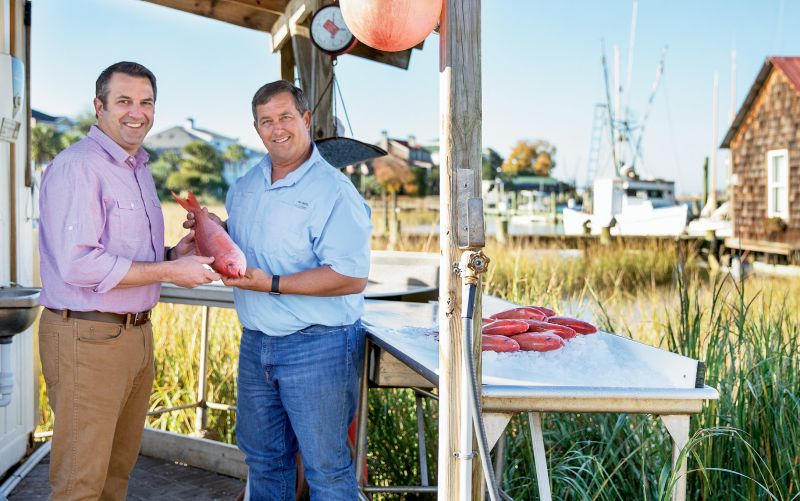
When it comes to their philosophy of sustainable seafood, one might call Kevin Johnson, chef and owner of Charleston’s noted restaurant The Grocery, and Mark Marhefka, second-generation fisherman and owner of Abundant Seafood, a match made in heaven. “As my wife and I opened The Grocery, we made a conscious decision to have a personal connection to the people who provide our ingredients,” Johnson says. “We aligned ourselves with small, family producers, like Mark and Kerry Marhefka. Their company delivers an outstanding product that I trust completely.”
Johnson honors Marhefka’s pole-fishing-only business ethic by utilizing his catch from snout to tail. To put the philosophy to practice, Johnson here offers two lessons in whole-fish utilization, and he and Marhefka select a beeliner, aka vermillion snapper, as the centerpiece for three dishes.
Plentiful in season and rarely weighing over five pounds, the beeliner has flesh that Johnson describes as a perfect mix of “mild and delicate yet compact and meaty.” One four-pound beeliner can produce both filets and chowder as readily as two smaller fish; porgy, pink snapper, or black bass make equally sublime substitutes. This is critical information if, like Johnson, you want to serve fresh local fish. And Marhefka—active in fishery management for more than two decades and fishing from North Carolina to the Keys—knows well the seasonal quotas, trip limits, and sizes enforced in an effort to prevent overfishing. (The maximum length for the commercially caught beeliner, for example, is 12 inches.)
Johnson’s first lesson: the ease of grilling a whole fish. Liberally seasoned and rubbed with a snappy gremolata, the fish will turn out “crusty and moderately charred on the outside, supple and juicy on the inside.”
One-hundred-percent utilization is also feasible when filets are the desired fare. For his second lesson, Johnson scales and guts two beeliners, skillfully carves out filets, and then saves the heads, bones, and scraps for a chowder. (While a fish market may sell heads and bones with filets, it’s often a better bargain to buy the whole fish, because you get the scraps, too.)
To prepare dish number two, Johnson pan-braises the filets to crisp the skin, which contrasts with the little snapper’s fine, aromatic flesh. Pair the filets with steamed Carolina or Charleston Gold Rice, boiled spring potatoes dressed with olive oil, or tiny farro piccolo with fresh fine herbs, he suggests.
Finally, the chef prepares a spring chowder made with those reserved heads and bones as the base for a fragrant fish stock. Once the stock is strained, he adds the snappers’ scraps, plus an array of market-fresh vege-tables, for a dish suffused with seafood flavor that celebrates the season.